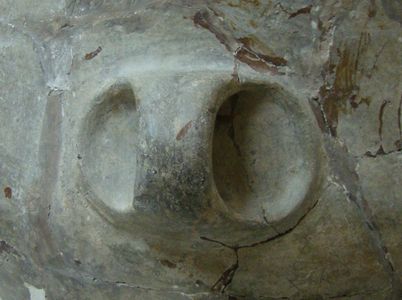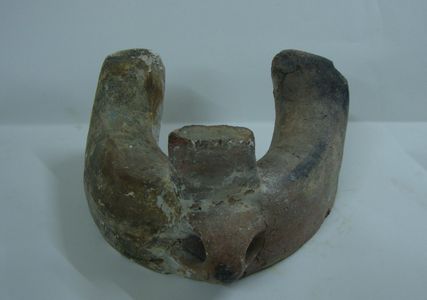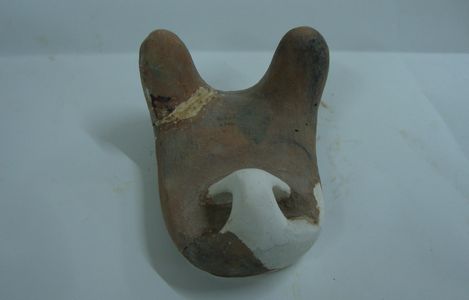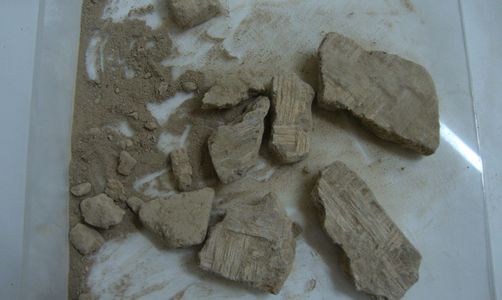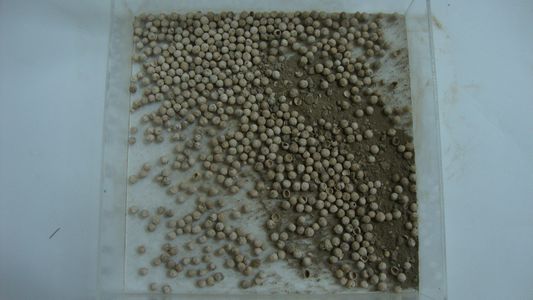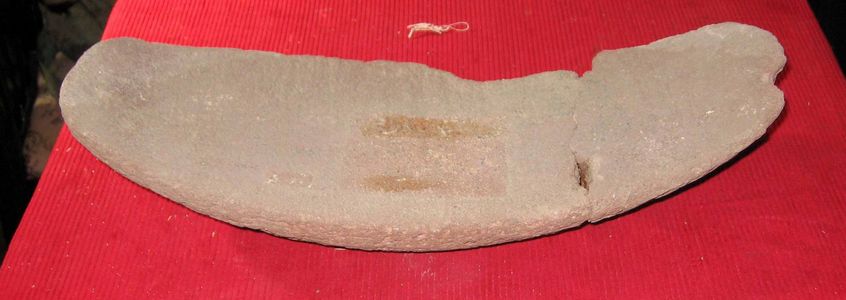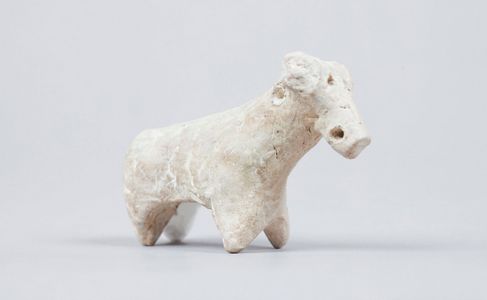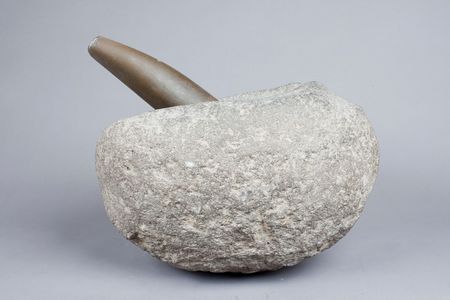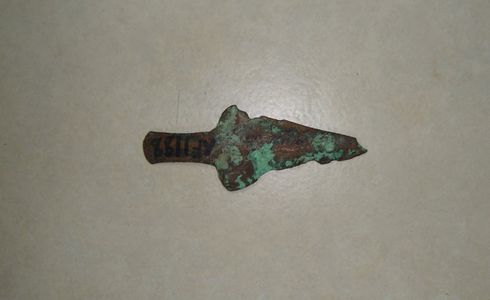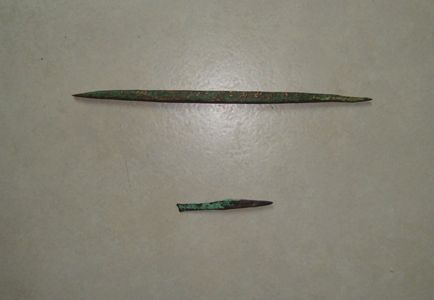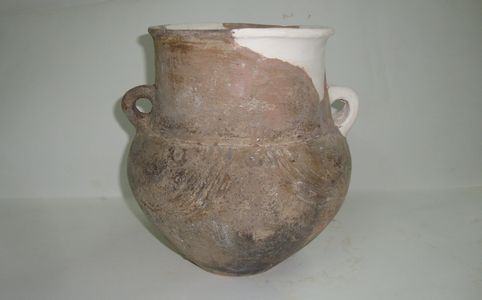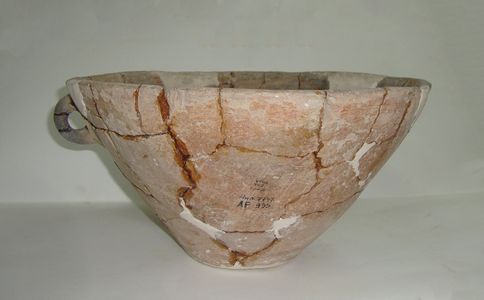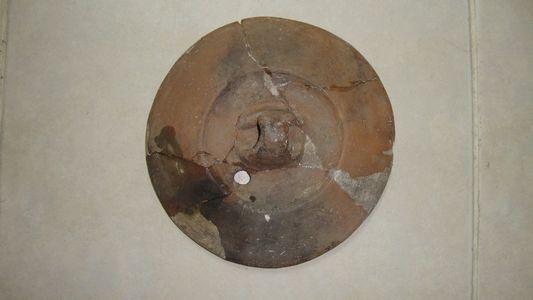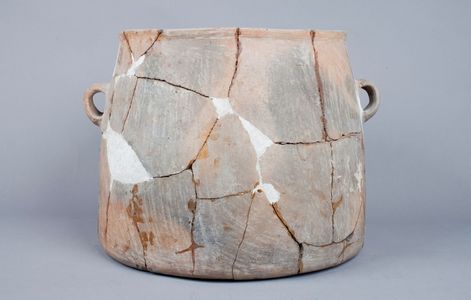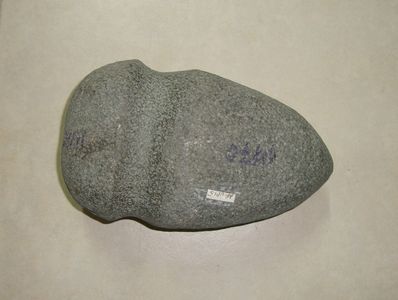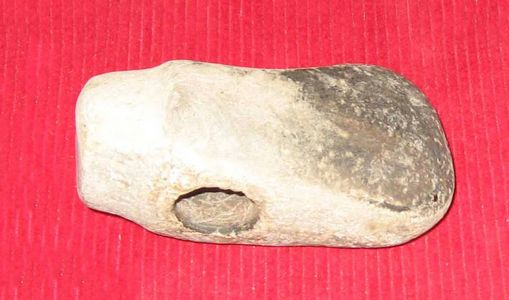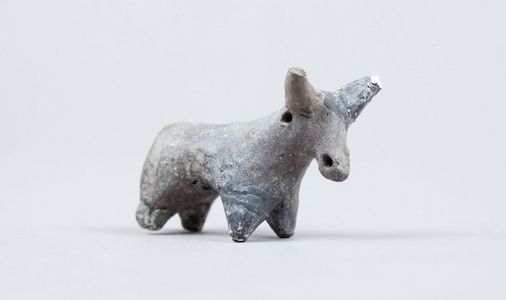AZERBAIJAN DURING EARLY BRONZE AGE
Kur-Araz archaeological culture
In the Early Bronze Age period of middle IV – late III millenniums B.C., central and eastern parts of South Caucasus region, as well as different territories in Northeastern Caucasus, Southern Azerbaijan and Eastern Anatolia regions were populated by tribes which shared common material and cultural traditions. As first archaeological proofs of their existence were discovered in 1940 in the interfluve of Kur and Araz, researchers named those tribes as the Kur-Araz culture.
Horticulture and pastoral tribes. Relations
Development of horticulture and pastoral farming had caused an increase in the sizes of some inhabited localities, which evolved into the full-fledged settlements. These developments had caused demographic growth, strengthening of patriarchal relations and increased social stratification. Both power and property ownership rights had been consolidated in the hands of the tribal leaders. These changes caused diversification of intertribal relations, and one of the key contributors to this process were nomadic pastoral tribes which had potential to spread technical and cultural innovations. Developed relations between local tribes and tribes from the neighboring regions are evidenced by different archaeological findings, mainly bronze implements. As there are no tin deposits in the Caucasus region, it is assumed that locally discovered tin and tin doped bronze artefacts do originate from the other regions. The same is true for the nickel. Local Early Bronze Age artefacts with an admixture of copper and nickel are actually the evidences of developed relations between the tribes of Caucasus and other Western Asia regions.
Settlements
Within the territory of modern Azerbaijan, tribes of the Kur-Araz culture either lived in some of the abandoned Eneolithic settlements (e.g. Kultapa I, Ovchulartapasi and Babadarvish site in the Northern, and Goytapa and Yanigtapa sites in the Southern Azerbaijan), or founded new settlements like it was in Gobustan, Mingechevir, Garakopaktapa, Gunashtapa, Chardakhlitapa, Misharchayi, Sarkartapa, Juttapa, Shortapa, Garahaji, etc. New settlements were normally established at an area of 1-2 ha, in the foothill zones along minor river banks. The largest of discovered settlements is Yanigtapa site in Southern Azerbaijan, which covers an area of 9 ha. It can be judged based on the site’s example that some Early Bronze Age settlements had quite large permanent population and sufficiently stable livelihoods. This conclusion is supported by the thicknesses of cultural layers, which exceed 8 m on Kultapa I, 7 m on Garakopaktapa, 4 m on Misharchay and 9 m on Goytapa (western bank of Urmia lake) sites. Some settlements were surrounded by fortifications. Houses were made from simple bricks and had circular, sometimes right-angular design. Circular houses had diameters of 3-5 m, sometimes 13 m, and were covered with conical roofs supported by pillars. Heating of premises was maintained by earthen braziers.
Earthen brazier
Intended for heating a house, the brazier was discovered in 1960 among Early Bronze Age cultural layer of Kultapa I site. Produced from a mixture of poorly kneaded clay and sand, the brazier has a diameter of 27.3 m.
EARLY BRONZE AGE: ECONOMY
Horticulture
Agriculture, especially plough based horticulture played leading role in the economy of people who lived in the territory of Azerbaijan. Tribes of Kur-Araz culture used cattle as beasts of draught and continued irrigating the croplands. It is seen from remains of artificially grown cereals discovered from the country’s Early Bronze Age settlements. While irrigation was widely practiced on lowlands, mountainous areas were rather suitable for development of dryland farming. Tribes grew wheats, hordeums, linums and peas. On Babadervish archaeological site, two storage pits with hordeums and common wheat were discovered. During the Early Bronze Age, wheat used to be the most widely developed type of crops cultivated. Harvest used to be gathered with collapsible sickles consisting of wooden handles and flinty teething. Among artefacts collected from Kultapa I site, there are sickles with bronze teeth, too. Grains were milled by several simple methods, including manual crumbling, and stored in large earthenware pitchers, pits or special brick constructions. For example, there are 22 pits with stone or brick bottoms on Babadarvish site, and a thick-walled grain depot divided into four sections in Yanigtapa. On Kultapa I site, there is a furnace with flat surface which was apparently used for baking the bread.
Pastoral farming
Another key sector of the Early Bronze Age economy is cattle-breeding. As demonstrated by the found animal bones data, pastoral farming activities of the described period had mainly covered oxen, cows, goats, sheep and pigs. If in the period’s beginning livestock were mainly composed of black cattle, later the share of small cattle became predominant. Continuous increase of a livestock required new nourishment sources and pastures and led to the development of transhumance and nomadic cattle-raising. The increase in livestock had caused the emergence of surplus products. Butter production is also important in the history of pastoral farming. During this period, the first clay “nehre” was invented. It is believed that the name "nehre" appeared at the time of its invention.
Stone mortar and pestle
Primary economic concern of the Early Bronze Age people was arming with sufficient stocks of cereals, e.g. wheats, hordeums, millets, etc. Archaeological findings of that period include graters, hand mills and other simple crop milling appliances. One of such artefacts is mortar and pestle discovered from the Early Bronze Age layer of Kultapa I site. The mortar is produced from a stone fragment which had been hollowed in the shape of a tray. The pestle is made from an oblong pebble. The mortar is 29 cm tall and 17.5 cm in diameter.
EARLY BRONZE AGE: CRAFTS
Metallurgy and Metalworking
There are rich copper deposits in Gadabay, Mountainous Garabagh and Balaken districts of Azerbaijan. Development level of metalworking is clearly reflected by extraction and smelting of ores, casting of metals, application of special mixtures, metal forging, as well as diversification of implements, arms and adornments. There are several metal smelting facilities discovered among the archaeological monuments of Kur-Araz culture, indicating that the copper deposits of Azerbaijan had been exploited since the Early Bronze Age. Key contribution to the studies of early metalworking practices of Azerbaijan was made by copper smelting furnace remains, metal ware items and the half fragment of a trough-shaped casting mould, all discovered on Babadervish site. In one of the furnaces, end products and ingots of copper were found. Metal smelting facilities were also discovered on Kultepe, Garakopaktepe, Shortepe, Misharchay, Goytepe, Yanigtepe and several other sites. Spectral analysis of the discovered metal artefacts had confirmed their copper- arsenic composition. Ancient masters had learnt that adding mixtures to a copper (arsenic, tin, nickel, etc.) can reduce its’ melting temperature from 1083° to 700°.
Pottery
Earthenware items of the Kur-Araz culture had been produced mainly from a mixture of well-worked clay with sand. Sometimes such items were prepared by using sand filled bags. Some of the culture’s pottery artefacts have thin walls, which convey a sense that they had been produced on the potter’s wheels. Artefacts discovered from the Lesser Caucasus sites usually have well-burnished dark surfaces and brown primes. There is also the pottery with reddish and grey clay, too. On Garakopaktepe site, grey glazed pottery is younger than black glazed items, while on Yanigtepe site near Tabriz both pottery groups are present in the same cultural layers. On Misharchay site, red-coloured items prevail.
Special mention should be made of ornaments used to decorate the epoch’s pottery items. Among the discovered artefacts, there are items decorated with various embossed, imprinted or engraved ornaments, including double-spiral, concentrical round, rhomboidal, triangular patterns, as well as schematic bird and animal figures.
Development level of the Early Bronze Age pottery crafts can be seen from many different-size artefacts. Ranging from tiny bowls to large earthenware containers for storing cereals, these artefacts include different bowls, jugs, dishes, mugs, pots, etc. Mass production of clay caps with hemispherical handles began and is one of the distinctive features of the Kur-Araz culture.
Weaving and wood carving
During archeological excavations in the settlements, spindle whorl made from the bones of cattle and with holes in the middle used in weaving were found. Spindle whorls were sometimes made of clay and stone. In the Early Bronze Age, spindle whorls were the main tool in spinning. There are many traces of cloth materials discovered in the period’s pottery items.
Clay wheel models, pole wells in houses, beam remains in burial mounds and other such evidences give an idea about the art of wood carving of the Early Bronze Age.
Stone axe
Among Early Bronze Age artefacts, there are samples of stone axes, too. One of such samples is 10.5 cm long axe discovered in Gusar.
EARLY BRONZE AGE: CULTS & RITUALS
Fertility cults
Changes occurred in the economic activities of Early Bronze Age societies had affected their spirit world, too. In Azerbaijan, the described period is characterized by the emergence of new cults, traditions and spiritual rituals. Increased economic productivity had considerably reduced the women’s authority and shaken the basis for matriarchal worships. Conversely, men had become property owners and family patriarchs, and gained essentially higher position in respective social hierarchies. In this regard, male statues are created. As a symbol of fertility, clay braziers and trivets are sometimes made with images that reflect the male sign. Cult of men is clearly seen from the burial rituals. Male leaders of the tribes had been buried with special solemnity and their graves were covered with high burial mounds (kurgans). Development of pastoral farming had caused further changes in the ancient people’s worldview and beliefs. Members of ancient horticulture and pastoral farming societies not only worshiped the figures of different domesticated animals, but also used them as mediums when executing special harvest triggering rituals. Even after societies had stepped up to the production-based economies, exorcistic cults and rituals continued playing an important role in their lives.
Earthenware animal figures: Sacred Bull
Among the artefacts of Kur-Araz culture, there are many earthenware figures of different domesticated animals. Connected to animal worships, such figures had been detected on many archaeological sites across the entire South Caucasus region. In the historical territory of Azerbaijan, such figures were discovered on Kultepe I, Makhta I, Gunashtepe, Uzuntepe, Babadervish and Goytepe (Southern Azerbaijan) sites in the north. The most of the figures discovered on Kultapa I site, are bulls (21 figures), while the remaining are sheep, goats and dogs (3 figures). Two bull figures with unique design were found around a fireplace in the one of house ruins of Babadarvish. None of the animal figures discovered on the Early Bronze Age archaeological sites of Azerbaijan are the wild animal figures. It means that people of the given epoch only worshiped animals which they had domesticated and used in the farms. Majority of earthenware animal figures are the figures of bulls. Also there are hornlike reminding trivets found from some of the ancient settlements.
Discovery of hornlike trivets, bull figures and bull graves speak for the fact that the sacred bull worship had been widely practiced in the Early Bronze Age Azerbaijan.
Funerary rituals
Early Bronze Age was marked by the changes in funerary rituals, too. Starting from that period, people had stopped burying decedents in the settlement territories and started allocating special sites for the graveyards. Separate families and clans started distinguishing themselves by building specific memorial monuments. Emergence of such monuments is related to a belief into a decedent’s life after death. For example, each kurgan from the Khankendi group of burial moulds accommodates bones of about 40-50 people. Each grave in the hill is enclosed in up to 4.5 m wide circled area delineated by narrow ditches. In such graves, corpses had been buried in flexed, sitting or supine positions, with heads often resting on the earthenware bowls or fragments of stones. Usually decedents had been buried together with items they had used in their lives, e.g. stone, metal and bone implements, jewellery and adornments, pottery and food-stuffs. In one of the Khankendi kurgans and in the monuments of Ganjachay basin, signs of cremation rituals were recorded as well. For example, in one of the kurgans detected in Ganja’s vicinities, consolidated mass of previously burnt human bones, coal, pottery fragments, stones and other materials was detected. In a kurgan located in the Goygol district, the corpse had been cremated on a stone slab, and multiple fragments of bones had been preserved together with charcoal and ashes on the stone’s surface. Signs of cremation were also detected on the ancient burial sites of Oghuz and Gabala. For example, bones of 26 cremated corpses were found in two kurgans near Gabala. As there weren’t any charcoal remains in the grave, we can conclude that the body had been cremated with the use of oil or petrol.
